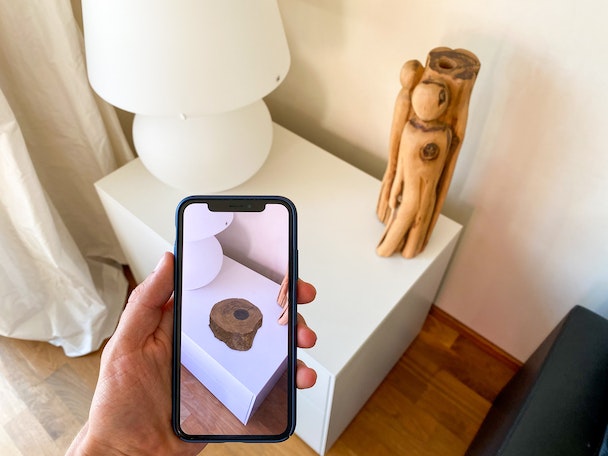5 basic principles for getting better results from AR marketing
Before investing in augmented reality (AR), brands must consider some basic principles – and no, QR codes are no longer enough. Zappar's Dave Mather outlines the rules of engagement for using AR in marketing strategy.

Access to AR is improving, but brands underestimate what it takes to get users to actually engage / UNIBOA via Unsplash
It’s nearly 2023. The metaverse and associated immersive technologies are key talking points in boardrooms across the globe. For many, they represent new and interesting ways to reach and engage younger, more discerning audiences as tried-and-tested marketing channels fail to cut through.
According to Snap’s latest Augmentality Shift report with Ipsos, four out of five brands that use augmented reality (AR) say that it helps to drive sales, acquire new customers, and increase performance. These are all metrics that marketers should care about.
However, many aren’t driving consistent results from the technology. Worse yet, many are still failing to use it at all.
Advertisement
With immersive technologies becoming a mainstay in how we communicate, marketers must start thinking about how they can use AR to increase engagement. Before diving in headfirst, read up on these five key principles.
1. Don’t use AR for AR’s sake
AR is not for everybody. Nor should it be used to ‘tick a box’. Instead, think deeply about the problem you’re solving with AR and how it ties back to your campaign objectives (and wider marketing strategy). If you don’t have a clearly defined objective or measurement of success, don’t do it.
You should be able to communicate the reason you’re using the technology back to the business (or client) before you start thinking about creating any AR solution.
Advertisement
2. Put your audience first
All marketers should be familiar with this rule: put your audience first. This comes down to where they are, who they are, what device they’re likely using, and where they are in the world.
Without this, you can’t use AR effectively. Understanding your audience deeply, and in what context they’ll be consuming your AR experience, is key.
3. Be authentic to your brand
As with any campaign, you want it to embody the essence of your brand, your values, mission, and purpose. It’s no different in AR. In fact, the technology heightens this dimension.
We’re seeing this more with brands entering the metaverse and not necessarily understanding the technology, audience, and purpose (I’m looking at you, Walmart). Make sure your AR experience fits with your brand values, tone of voice and (to reiterate the second rule) your audience.
A great example of this is a campaign we worked on at Zappar for Yorkshire Tea and their ‘Yorkshire Tree’ campaign. The AR experience took their mission to plant one million trees across Kenya and the UK to a new level, immersing users in their story with an interactive AR mini-game that put them in the driving seat, helping them plant the trees.
4. Think engagement, not reach
AR is great for a lot of things: explaining complex concepts, visualizing products in their natural habitats, and delivering greater personalization at scale. However, where it really adds true value is engagement.
It can be as simple as adding a holographic video message in AR within your customer comms from a senior leader, or as complex as creating AR portals into new worlds.
Think about the additional engagement this offers your marketing. Yes, AR is a ton more accessible than 3-4 years ago with the advent of WebAR (3.9bn devices to be precise). Delivering a deeply personal and visceral experience is where you’ll pocket the difference.
The key takeaway here is that people are actively engaging with the AR content you create, more often than not in the real world by physically moving around 3D content. This is a step change from watching a video ad across paid social.
5. Don’t get lazy with your CTA
Don’t forget about your call to action (CTA) and how you’re getting people into your AR experience. A great call to action is simple, direct, and to the point. Remember to communicate the unique value you’re offering your audience clearly and simply.
At the end of the day, it’s a value exchange and people want a return on the time they’re investing in your experience. Please, don’t add a basic ‘scan me’ to your AR; it simply isn’t enough nowadays, and you won’t get people into the content you’ve spent so much time creating.
Get these five principles right and you’ll be well on your way to creating more successful marketing campaigns that put AR front-and-center, driving real business value.
Advertisement
Content by The Drum Network member:

Zappar
Zappar is the world’s leading augmented reality platform and creative studio for mobile and web apps. Since 2011, Zappar’s mission has been to democratise AR and get it into the hands and lives of as many people as possible, unlocking value for businesses and end-users alike.
Find out more